This exploration is for all ages, as the colored smilies show. You can examine the Bill of Rights with your whole family together!



The Bill of Rights is a history exploration from Layers of Learning Unit 4-1 about American government. Layers of Learning has hands-on explorations in every unit of this family-friendly curriculum. Learn more about Layers of Learning.
The Bill of Rights is the first ten amendments to the United States Constitution. When the Constitution was passed the lawmakers promised they would write a Bill of Rights immediately afterward. The first ten amendments are the result.
The Bill of Rights differs from other similar documents because of the way the “rights” are phrased. Instead of telling people what they may do, the Bill of Rights tells government what it may not do. This is intentional because the American Founders assumed that people naturally held all rights, not just those “granted” by the government. The entire Constitution was written to explain what government may do, the Bill of Rights explains what government may not do.
Step 1: Library Research
Before you begin exploring, read a book or two about the Bill of Rights. Here are some suggestions, but if you can’t find these, look for books at your library about the Bill of Rights, Constitution, and each of the individual rights. The colored smilies above each book tell you what age level they’re recommended for.
As Amazon affiliates, the recommended books and products below kick back a tiny percentage of your purchase to us. It doesn’t affect your cost and it helps us run our website. We thank you!

The Bill of Rights
by Norman Pearl

A Kid’s Guide to America’s Bill of Rights
by Kathleen Krull
Step 2: Bill of Rights Explorations
Bill of Rights Matching Game
For this exploration you will need the printable Bill of Rights matching cards and some crayons or colored pencils.
Print out the Bill of Rights Matching Game on card stock, have the kids draw illustrations for each one, then cut apart the cards.
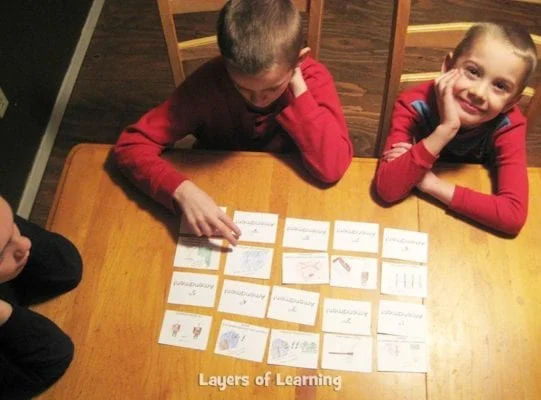
To play, turn the cards all face down and mix them up. Take turns drawing two cards at a time. If the number and the description match you get to keep the set. See if you can remember all ten matches without having to look it up.
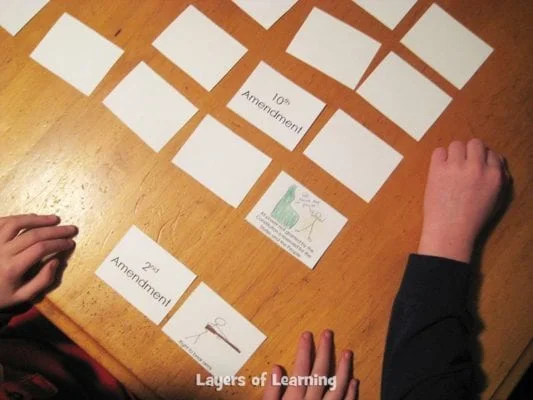
The description cards are arranged opposite their amendment title on the printable. But if you forget the order after they’ve been cut apart you can refer to the image below.
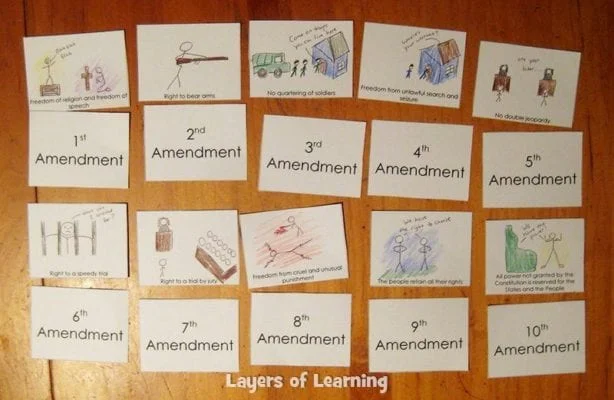
First Amendment Poster
For this exploration you will need poster board and markers.
Make a poster with the First Amendment written in the center. Around the outside draw images that remind the students of why the First Amendment is important. You might have pictures representing some of the atrocities (or just uncomfortable situations) caused by government suppression of conscience. Or images showing people exercising their first amendment rights such as the civil rights sit-ins, people at a political rally, people attending a religious meeting, an image of someone reading a banned book, and so on.
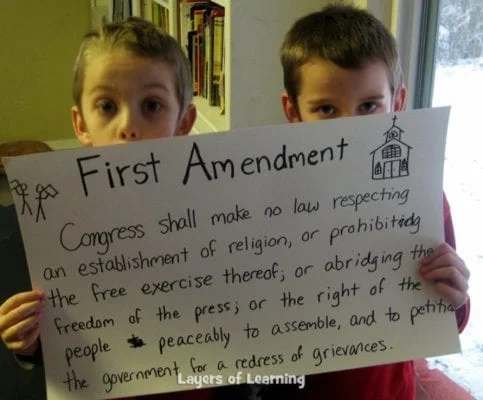

For older teens only
Discuss some deep thoughts about the First Amendment.
- Does the First Amendment apply only to political speech or all speech?
- Does it apply only to the Federal government or all government?
- What if the speech hurts someone else? How do you define if it hurts someone else?
- What if the speech is traitorous or seditious?
- Should all religious practices be protected even if they are contrary to societies norms (like drug use, polygamous marriage, devil worship, self mutilation, and other strange rites)?
- Can speech be restricted in some places? Do private businesses or organizations have the right to restrict speech on private property? Do public schools have the right to restrict some forms of speech in their halls? Does the government have either the right or the responsibility to ban religious speech in any form from all government premises?
- Is it more important to protect freedom of conscience or to protect the norms and values of society?
- What are the consequences of any of the above allowances or restrictions?
Second Amendment Shooting Practice
For this exploration you will need a BB gun and an instructor who knows about gun safety.
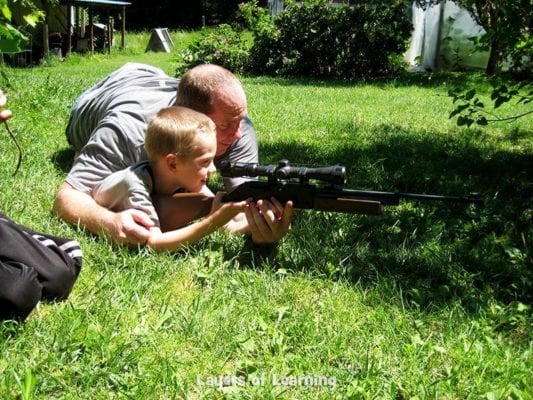
The second amendment says that the government may not restrict arms (weapons) use from its citizens.
Since Americans live in a nation with guns, lots of them, our kids need to know how to be safe around guns. They should be taught respect for the weapon and respect for life.
Start with BB guns in a safe range area (a secure area that people won’t inadvertently wander into that is backed by a hill, straw bales or other secure measures to keep pellets or BBs from hitting things you don’t intend). Go over the rules of respect.
- ALWAYS keep the gun pointed in a safe direction.
- ALWAYS keep your finger off the trigger until ready to shoot.
- ALWAYS keep the gun unloaded until ready to use.
Have fun shooting at targets.
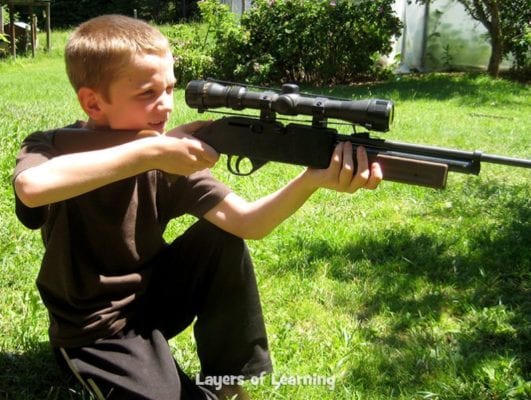
When kids are older, 12 or so, have them take a gun safety course from a certified instructor or take them out on a gun range with someone knowledgeable to shoot a .22 or other calibers of guns.
Step 3: Show What You Know
Have each student write up quiz questions about the Bill of Rights and quiz each other with points and popcorn and lots of good-natured competition.
Additional Layers
Additional Layers are extra activities you can do or tangents you can take off on. You will find them in the sidebars of each Layers of Learning unit. They are optional, so just choose what interests you.
Writer’s Notebook
Learn about some stories from history where the rights we enjoy in the First Amendment were not given to certain people or groups with tragic results: St. Bartholomew’s Day Massacre, Missouri Executive Order #44, Imprisonment of Galileo, Stalin’s Great Purge, French Reign of Terror, Alien and Sedition Acts (1798), Sedition Act (1918), or Tianenmen Square.
Older kids can read one of these stories, and write an essay explaining how the situation relates to First Amendment Principles and what the consequences of both the allowance of free speech and the restriction of it would be in the case.
Additional Layer
Research the government structure and constitutions of other countries around the globe. It is helpful to compare and contrast different rights around the world.

Deep Thoughts
Part of the reason for the 2nd Amendment was that the citizens of the nation were expected to keep it secure. We don’t all serve in the military or the police force, but, as Americans, we nevertheless have a responsibility for the security of our communities. How can you be a part of that security? How can you make your family and your neighborhood safer?
Get a Free Unit
Choose between the first unit in each Layers of Learning subject to try for free when you sign up for the newsletter.
We never spam and you can cancel your subscription at any time.


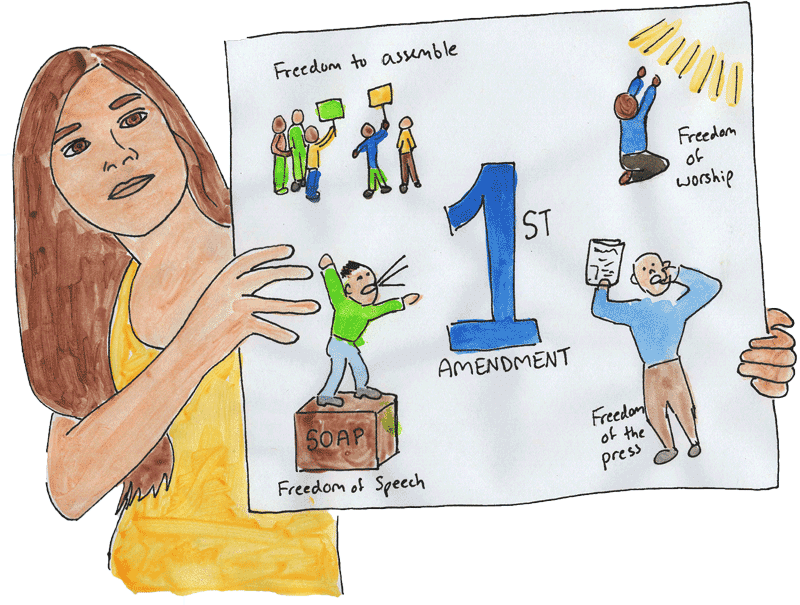
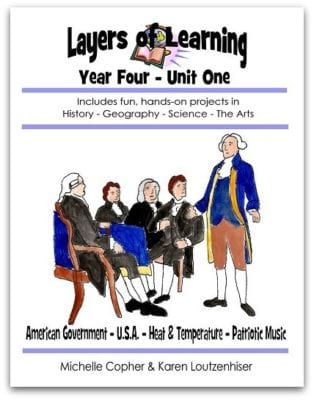

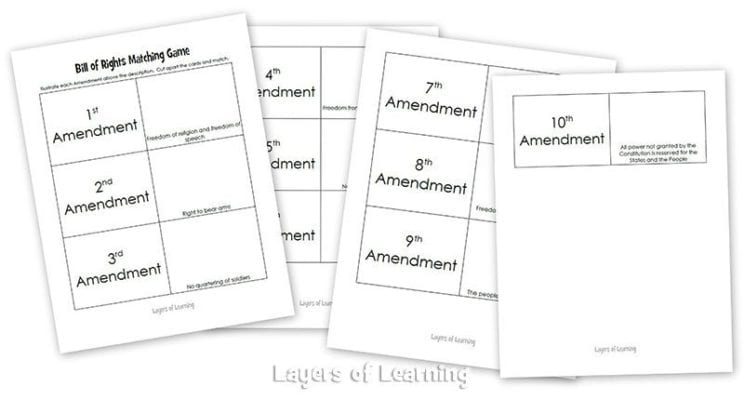




This seems an ideal site to discuss the difference between the Bill of Rights as it applies to adults and as it applies to minors. Somewhere child-friendly should.
Here’s my take as a foreigner.
They’ve weaker rights under the first amendment (less free speech in schools, juvenile curfews, and can they meet up with girlfriends/boyfriends without parental approval, etc).
Second amendment rights for kids are really tough, but IMHO if you have a gun culture it’s essential to teach the proper respect and handling of guns as soon as possible.
Third amendment doesn’t apply as kids can’t own property in the first place.
Fourth amendment, also watered down. School lockers can be searched at the lowest level of reasonable suspicion by a teacher, but not by a policeman alone. Teachers and parents can confiscate kids’ stuff. Property rights are minimal.
Fifth and Sixth amendment rights are pretty well covered for minors (grand jury excepted), but if ten year olds are to be expected to understand their Miranda rights (and I read that’s what the courts say), they are going to need advanced warning of what these amendments mean. Also real world advice like: kids can’t lie to cops (obstruction), but cops can lie to kids (interrogation). Ten years old seems way too young to teach them what they need to know, at least it seems that way to me.
7th isn’t really applicable if they’ve no direct access to the civil courts.
8th is different for minors – no right to bail, but no death penalty either.
9th and 10th don’t really apply to kids, do they? They have enough trouble accessing their enumerated rights.
So two rights apply almost in full, four are watered down, and four don’t apply at all. Is that really right?
Kids are always under the authority of their parents and should be protected by their parents and provided for by their parents. So, no laws never apply the same way to children as they do to adults. Children can’t “legally” do much of anything. However, it is important to recognize that the inherent rights behind the reasoning of the Bill of Rights and other statements of human rights apply as much to children as to any other group. For example, the second amendment isn’t really about guns or weapons, it is about the right to life. We have the right to weapons because we have the right to live and to protect our own lives, even to the point of deadly force. Children have the same right to life even if they can’t (and shouldn’t) tote guns around with them. They have the rights of conscience and equal protection of the law that adults do. It’s just that as children the actual legal code must be applied to them differently.
Really Pretty Coloring for the USA!!
Love Always, YSIC \o/
Kristi Ann